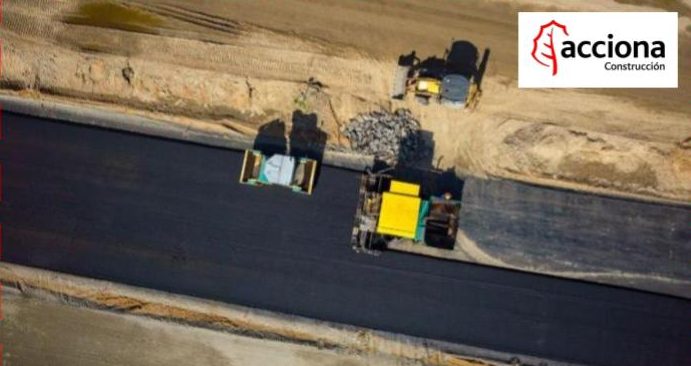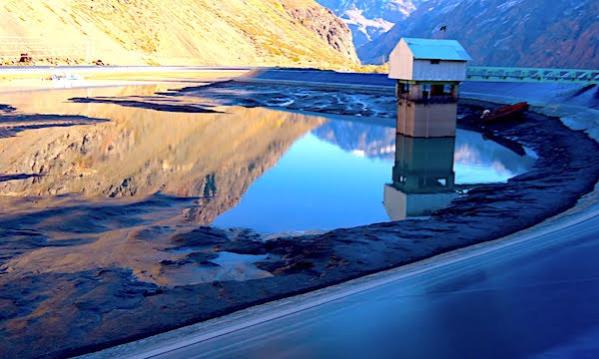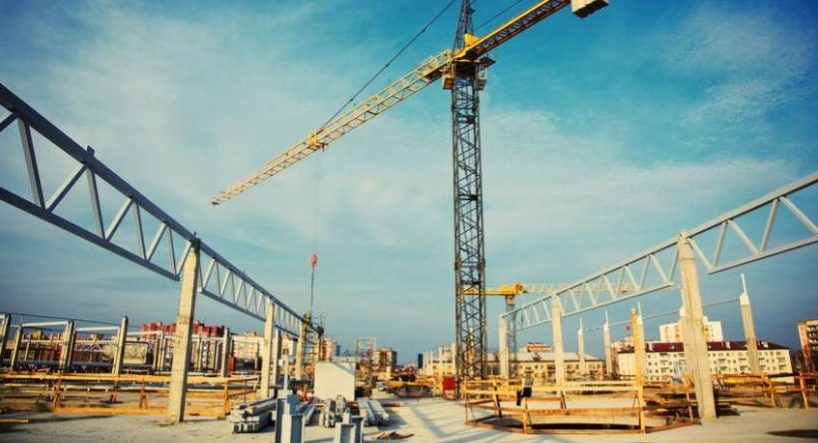SHARE
5 Innovative Construction Solutions through Open Innovation
The progress level of the construction sector is a good development indicator in any country since it directly impacts the rest of the sectors. One example is the need to build a good infrastructure network (harbors, railways, roads, etc.) to prevent an increase in the logistic costs of the retail sector. Another one is the importance of good civil works for electricity generation to achieve the lowest possible cost, and finally, the need to implement good construction techniques to develop cost-efficient mining projects. Innovative construction solutions are rather necessary.
Construction is a sector that represents 3% of the world’s GDP and employs 7% of the world's salaried workforce. China and India, some of the fastest-growing countries, are investing 20% and 6% of their respective GDP in infrastructures.
The global importance of the construction sector is indisputable due to its snowball effect on the rest of the industries and its ability to generate new jobs. For all these reasons, the construction industry should be top-notch, by incorporating the last technologies and innovations and applying Industry 4.0 practices to reduce its environmental impact, costs and increasing its productivity.
The biggest impacts of the construction sector are related mainly with the space it transforms, the exhaustion of non-renewable resources, the emission of pollutants, and the disposal of waste. For instance, according to ITeC data, to build 1 m2 of a house, over 2 tons of raw material are needed. The energy used in the production of house materials can be equal to the energy consumption of a family in 17 years. Also, the production of construction and demolition waste is over one ton per person/year.
Since construction is a core sector, it is continuously developing innovations and looking for new solutions, which generally focus on reducing its environmental impact, productivity improvement, and cost reduction. In this sense, both modular construction and integrated manufacturing play an increasingly important role. In Sweden, for instance, 84% of the single-family houses use prefab elements.
Recently, key multinationals of the construction sector have found or developed new technological solutions to solve some of their challenges using open innovation.
Here are 5 of those construction challenges, where freelancers, SME’s, tech centers, academia and engineers from other companies collaborated to solve them.
Automated Tunnel Reinforcement in ‘Block or Panel Caving’ projects
The construction and reinforcement of tunnels in underground mining is a process that uses modern equipment and tools available in the market today. However in mine-preparation projects by “Block or Panel Caving” with tunnels smaller than 4m x 4m, standard machinery cannot be used since it does not have enough space to operate and maintain the same productivity level.
In August 2018, Mas Errázuriz, a leading company specialized in the execution of mining, energy, and medium-big size infrastructure works, decided to try open innovation and launch an innovation challenge for tunnel construction. The objective was to find a way to increase the productivity in this type of reinforcement projects.
A description and technical specifications of the reinforcement process was jointly prepared for the challenge: Boring and protecting the tunnel with a layer of shotcrete, unrolling a metallic mesh and placing it on top of the shotcrete and securing the metallic mesh with helical steel bolts.
After 7 weeks, +40 participants proposed different solutions that included new tools and equipment for the purpose of automating the process. 5 participants from Spain, Portugal, the UK, South Africa, and Ukraine were finalists and the best solution (from Portugal) prototyped and tested in a real mining environment.
Solutions for the drying of soil in road construction projects

One of the main goals in a road construction project is to achieve the best balance during soil removal, that is, the excavated materials should be used as filling materials in cut and fill earthworks. In order to reuse the excavated materials, they must comply with the technical standard regarding soil mechanics classifications and other factors like humidity. If the soil does not comply, it must be treated to reach the standard or be rejected and taken to the landfill.
In November 2018, Acciona, a multinational from the construction sector with presence in all the continents, launched a challenge to find alternative solutions to the drying of soil which, so far, is done with lime.
The traditional process requires many hours and it depends on the availability and cost of the lime in each project location, which increases in many cases the global costs.
54 engineers from the 5 continents participated in this civil engineering innovation challenge, submitting different solutions. Some of them were based on the use of other additives that improve lime, others on the development of adapted machinery for continuous drying, on technological equipment for solid-liquid separation, etc.
The 3 final solutions enabled a more productive, environmentally friendly and cost-effective continuous drying and the winning solution came from a spanish engineer.
Sediment control in regulating pools from hydropower plants

Run-of-river hydroelectric power plants require a reservoir that regulates the flow upstream. In these reservoirs, and especially in some locations with a high amount of sand and clay, large volumes of sediments get accumulated and the regulation volume decreases. For this reason, the turbines cannot generate power when the price is at its highest.
In September 2018, a leading company in South America in power generation using renewable sources wanted to test our open innovation model to reduce the sediment accumulation in one of their reservoirs. During the summer, sediments take up 70% of the regulation reservoir capacity.
The goal was to find a new cleaning process or technology that reduced the high costs of the current dredging pumps. Technical data about the current reservoir was shared in this innovation challenge for hydro power plants, as well as its costs, the reservoir's plans and sketches, intake and outtake flows, granulometry of the sediments, etc.
Finally, and with the participation of 85 solvers from all over the world, the three final solutions were evaluated: two Argentinians and one South African engineer have submitted the best solutions, which prevents sediments going into the reservoir. And the winning solution from Argentina is being prototyped and tested in a real environment.
Asphalting under heavy rain

One of the most critical activities in road construction is asphalting. To obtain the required quality and strength, a certain temperature and humidity conditions must be maintained during this activity. For this reason, under extreme rain conditions and with the currently-used techniques, this process had to be halted, which created a huge impact on project costs (labor and machinery) due to delays.
In April 2018, Sacyr, an important multinational in the construction sector, decided to launch a challenge for road pavement under heavy rain to find solutions that enable the asphalting process regardless of the weather conditions.
The company was looking for a new process or asphalt mix that avoided an increase in humidity and maintained the temperature during ten minutes after laying the asphalt. Besides, the solution had to be easily adaptable to the current process and the available machinery, and had the best possible business case.
In six weeks, 35 engineers participated and the Portuguese professor Henrique Miranda won the challenge with an innovative solution that solved the problem by adapting the currently-used machinery while making the process more sustainable.
Modular and transportable factory to manufacture concrete prefabricates

In big civil engineering projects, temporary factories are used to manufacture precast concrete near the project site. These facilities are costly and take up a lot of assembly and disassembly time, which is why they are only justifiable in projects that take longer than 5 years.
In February de 2016, Pacadar, a subsidiary of the OHL multinational, wanted to embark on shorter projects and decided to launch a challenge to design a flexible building for a factory. The objective was to develop a more flexible temporary factory design that included a more agile assembly and disassembly process. Also, the solution had to reuse the biggest amount of material possible.
Once the challenge was launched, engineers, companies, freelancers, and startups from Canada, Saudi Arabia, Spain, Israel, Australia, and so on, joined and proposed different solutions.
The winning solution was created by an engineering startup which submitted a modular design with lower transportation costs in shipping containers.
If you want to know more about open innovation challenges continue visiting our blog or just contact us
